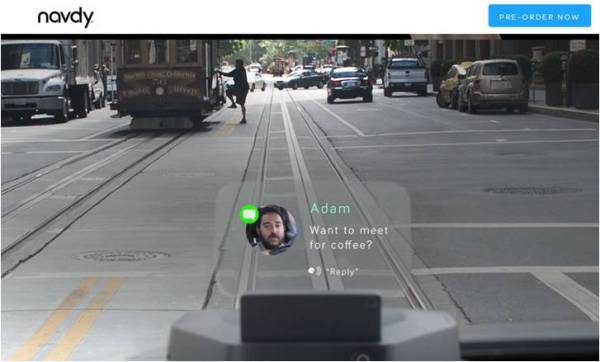I have been following the development of the head up display (HUD) for quite some time. It transformed itself in recent years from a novelty and gadget in a car to a “must have” feature in most luxury cars today.

The HUD has two main forms in today’s market, the built-in version used in high end cars and aftermarket models made for all cars. With built-in models being installed by leading car manufacturers, the part suppliers are developing solutions based on various technologies like LCD, LCOS or laser projection systems. These systems have come a long way in terms of optical performance, size requirements and component cost.
At the same time, aftermarket models come in all forms and price ranges, with a wide array of low cost models available from Chinese makers. There are also some established companies like Garmin that want to join the party. These models have some issue with the image projection if they are reflected from the windshield, as they create a double image. As a solution, manufacturers either offer a windshield attachable film to avoid such image distortion or provide a flip up screen that acts as a reflector.
From a business perspective, the global car market has surpassed 80 million light cars (this excludes trucks and buses) per year, a sizable market that can’t compare to the TV or smartphone market but is still attractive for the display and component manufacturers. At least the market has grown enough to attract market research firms offering market forecast reports on the technology.
While we love to report on new technologies in the display markets, the market development itself is as important. Without markets, technology becomes just science. So what will influence the market development? In consumer electronics markets, it is all about the adoption among consumers and we would expect that the same is true for the adoption in cars. There is, however, a slight hiccup in this assumption.
Cars operate on the basis of safety guidelines that take different forms from region to region, or even from country to country. What is fair game in one country may fall under unsafe driving conditions in a different country. A similar situation has arisen with the use of smartphones while driving and caused the release of laws in parts of the US, for example.
 Source: Navdy
Source: Navdy
The New York Times debated this issue in its recent article “Windshield Devices Bring Distracted Driving Debate to Eye Level“. It used the California based Navdy as an example for the trend of start up companies addressing the HUD market. Navdy enjoyed a recent investment by Qualcomm Ventures and plans to release its device later this year. As Matt Richtel from the New York Times reports, there are two different viewpoints circulated.
From the supporters of the HUD technology comes the general statement that HUDs are safe to use and since they are used in airplanes, they will increase car driving safety to new levels. The basic theme is that not taking the eyes off the road will increase safety.
The article quotes specialists on driving safety and HUD use that oppose such assumptions. Paul Atchley, a psychologist at the University of Kansas who studies driver distraction, comes to the conclusion that any interaction with a HUD is more than just seeing the related content. What this means is that even if the HUD information is shown perfectly placed in the field of vision of the driver, it still may be a source of distraction.
Christopher Wickens, a professor at Colorado State University and one of the leading experts in the country in the safe use of head up displays for transportation, sees the comparison to the use of HUDs in airplanes as ill conceived, as airplanes use only relevant information for the airplane’s operation. In addition he quotes Ms. Hersman, who was formerly the chairwoman of the National Transportation Safety Board, where she was involved in the regulation of head up displays for airlines. The statement concludes that HUDs in airplanes were only allowed after lengthy tests of what were the best and safest practices. The same could not be said for the use of HUDs in cars.
Here is the issue with this view. While air traffic is controlled worldwide by the one body based on local bodies, of course car traffic is a different story. Cars are ruled by local authorities and this is where the differences cause different forms of HUD adoption in the short to medium term. Some countries chose to leave considerable freedom to the introduction of car related technologies, while others chose to prepare extensive rules and laws to enforce driving safety.
I am not here to debate which approach is more appropriate in this case, but that the different approaches will force car makers to develop HUD solutions that adapt to the various local flavors of HUD use. Since this is a question of content more than anything else, it may be as simple as a software solution to serve the different country rules. All in all, I believe that the HUD is on its way to mass adoption in the car world. Which form these HUDs will take has still to be decided. – Norbert Hildebrand

